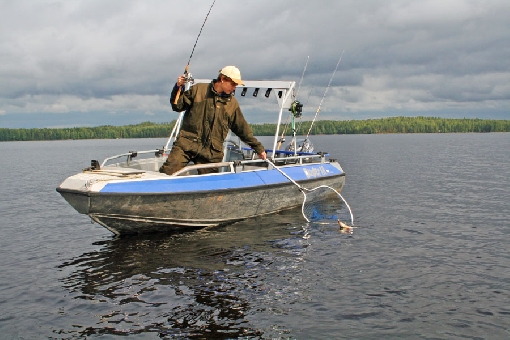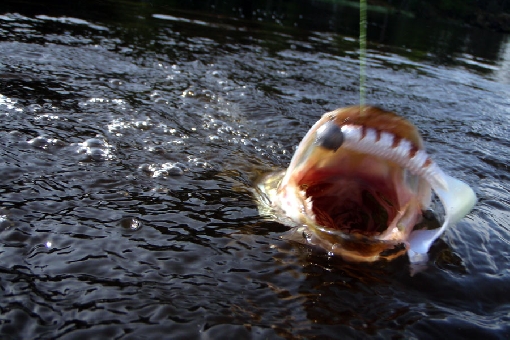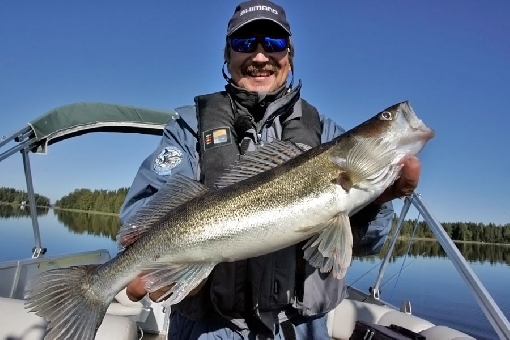Jigging
Photo: Jari Tuiskunen A jig angler’s arsenal is colourful and abundant.
There are plenty of waters suitable for jigging in Finland and many species here are eager to snatch a jig. Jigs have quickly become popular as casting lures for perch and zander. There is a simple reason for this: jigging is fun, active and eventful.Jigs are generally used with regular casting tackle. What you do here is cast the lure into the water and let it sink to the bottom. You then jerk the rod and wind the handle a couple of turns and wait for the jig to sink back to the bottom. Repeat this until a fish strikes or until you have reeled the line in. Typical jigging spots include edges of mid-lake shallows and fast-flowing sounds. Even though anglers often go after zander and pike in the morning or evening, jigging close to the bottom may also produce results in the middle of the day. As fish often lie close to the bottom and swim deep when waters are warm, the easiest way to catch them is precisely with jigs. Jigs also work for pike, bream and asp. These silicone lures provide catches throughout the open-water season. Photo: Risto Jussila  Lake Enonjärvi, Karstula. Grub jigs with good responsiveness The range of jigs available is extensive, but the most popular lures are 3.5–4.5-inch grub jigs. When big fish are ready to bite, anglers reach for five-inch and even larger lures. Fish jigs produce results in late summer in particular. Elongated grab jigs are also effective. If you're after a pike weighing several kilos, a sizeable fish jig is often the best bet. The weight of the right jig head to use varies considerably. You can use just 5-gram heads in 2-to-3-metre waters, whereas 7 to 14 grams is a good range for deep, 5-to-10-metre waters and 16 to 25 grams work in deep and flowing waters. The key aspect is a good feel for the jig that you are swimming. As a rule of thumb, you should use as lightweight a jig head as allowed by a good fishing responsiveness. More weight is required in flowing waters and the same also applies if you have a sturdy line on your reel. Winds will also diminish the fishing responsiveness. Photo: Jari Salonen  Pike are eager to bite large grub jigs. Dark shades for clear, glaring for muddy waters Water is clear on the Gulf of Bothnia and in the outer Gulf of Finland Archipelago, which means that brownish, motor oil coloured jigs give good catches, among others. Jig colours suitable for clear waters include green and dark shades. When heading to more muddy waters, you should dig some colourful models out of your jig box. Fluorescent yellow, green and pink shades are trusty colours for muddy waters and often second to none when fishing for zander and perch. If fish are reluctant to bite, you should reach for jigs in more discreet colours. White and phosphorescent jigs provide catches, because they create a good imitation of common prey species, i.e. bleak, Baltic herring and vendace. Photo: Jari Salonen  Lake Ruovesi, Vilppula. |